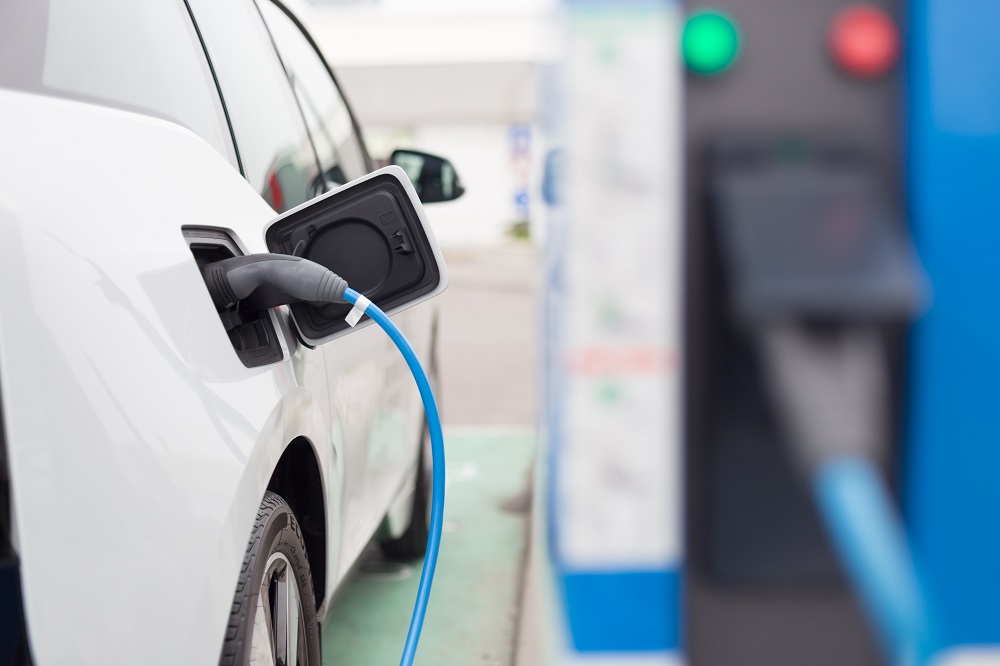Why electric vehicle charging infrastructure needs standards

This is a snapshot of the current public electric vehicle charging infrastructure.
Imagine you’re driving your family in your electric vehicle on a cross-country summertime trip. The car indicates the battery is below 20 percent. Having mapped out charging stations along the way, you know you’re close to the next one. When you pull in, you find the charging station belongs to a specific network provider that requires their app to charge; no credit card reader is available.
So, you download the app. Or, at least try to. The cell connection is poor, so it takes a while to find it in the app store and download. Then you must register, which includes creating a log in and password, verifying through your email and entering personal and payment information. Then you pray that the cell connection holds up long enough to complete these steps, or else you and the family risk being stranded.
Welcome to EV range anxiety due to a lack of a universally accessible “fueling” infrastructure.
The electric vehicle industry is at a nascent stage, and its potential growth can be easily stifled by the lack of access and availability of a reliable public charging infrastructure. According to Accenture research, nearly 63 percent in a survey of 6,000 consumers worldwide stated they would switch to an electric vehicle to save money in the long term. However, purchasing costs of these vehicles and access to public charging remain barriers to ownership.

The electric vehicle charging infrastructure situation
Currently, most states in the U.S. lack a comprehensive strategy for transportation electrification, and, while some states have mandates or goals, they lack a concrete roadmap on how to achieve them. Instead, resources are being directed to funding pilot programs via the electric utility or grants through different state agencies, leading to market fragmentation and cost inefficiencies.
One key hurdle the industry faces is the reliance on a rebate-based business model, in which the utility provides a rebate, credit or refund for the charger purchased by a site owner. The utility, however, may not own the charging infrastructure or, at best, just owns the electrical “make-ready” equipment that connects the charger to the grid.
Emphasizing a rebate-based model has neither proved to animate the electric vehicle market, nor provided a path that could scale. It has also proven to be cost inefficient since purchases are being made site by site by customers one at a time versus bulk procurement – the common practice in the utility industry. Yet, we know from experience that costs are dependent on procurement models as well as product standardization – larger scale and open technical standards drive down costs.
There’s no broader strategy being followed right now beyond exploring which “science experiment” sticks better than another. This short-term thinking is consuming valuable public funds and is hindering the market.
Meanwhile, other important questions go unanswered. How do we ensure the customer experience is seamless helping to drive electric vehicle adoption? How can we replicate the gas station experience to EV fueling? How do we deploy infrastructure rapidly? How do we increase public charger utilization rates, which need to be higher to promote investment?
What should the basic infrastructure be?
Electric vehicle drivers need to be confident they will have access to any public charger and that they can connect their vehicles and “fuel” with their preferred form of payment. Surprisingly, over 90 percent of charging stations today are proprietary in terms of payment options, meaning very few of the 20,127 public locations have open access like gas stations do.
The first requirement to address this “closed system” is to ensure that all electric vehicle service providers (EVSP) offer universal open access, such as credit card readers at the minimum since credit cards, debit cards and prepaid cards provide the most common form of payment option for the American consumer. We encourage other forms of payment, including mobile options, so that the customer has a choice – the charging provider should not be deciding on behalf of the customer. To compare, Shell or Chevron doesn’t ask for our personal information every time we fill our fossil-fueled vehicle, nor do they prevent us from using our preferred payment option at their stations.
Charging infrastructure should be based on open technical standards to reduce the risks of stranded assets, as well as ensure customer switching capability with no vendor lock-ins. One way to accomplish this includes deploying chargers that are Open Charge Point Protocol (OCPP) compliant, specifically between the charger and the cloud. Should an EVSP exit the business or the customer wish to change the EVSP for any reason, OCPP ensures that a new provider can easily take over the existing charging network. Additionally, chargers should be OpenADR compliant – the standard widely used by utilities – so that they can be a grid asset by being able to receive/react to demand management signals.
Ideally, all chargers, whether public or private, should be smart. Being networked and sub-metered allows for dynamic rates to be used for electric charging; this benefits both the consumer and the grid. Time-of-use rates allow customers to take advantage of low wholesale market prices or even negative prices when there is excess renewable generation.
Similarly, timing electric vehicle charging to match grid conditions is beneficial, especially to ratepayers. At Siemens, we developed a model to calculate the gross financial benefit of an electric vehicle to a utility’s non-participating ratepayer’s and estimated a $3,071 savings per electric vehicle over 10 years. To capture this benefit, managed charging is critical to ensure that the distribution grid can integrate an influx of electric vehicles effectively without any short term need for upgrades.
Gas station queues, if there are any, can be measured in minutes. Charging a battery is different, as it depends on level of charge, depletion of the battery and even environmental factors. Level 3 charging, the fastest available, averages an 80 percent charge in 30 minutes, compared to five minutes to fill your tank with gasoline. Customers must have the means to see the status of nearby charging stations and critical factors such as the price of charging and wait times.
Electricity rates are notorious for being complex and opaque, but the information provided at a charger should be as simple as it is today on a gas pump. At this state of the market, a time-based pricing model for display at public chargers, as most electric vehicle drivers know how long it takes to charge their car, is one effective approach.
How can government help?
Electric vehicle regulations are being driven at both the federal and state levels. As of today, 43 states have some form of electric vehicle-related initiative underway either at the legislature or the utility commission.
According to the Advanced Energy Economy, the basic process in developing and implementing a regulatory framework should help any state engage stakeholders, allow the best information for decision-making to emerge and reduce marketplace uncertainty: “Such a regulatory process will improve the likelihood of maximizing the benefits of PEV (public electric vehicle) market development while managing any risks associated with change.”
We recommend that regulators take a comprehensive approach to transportation electrification. This will enable a nationwide understanding of what, when and where public electric vehicle charging infrastructure is required. Based on this analysis, regulators can map how to integrate into regional and private initiatives already underway that support the state’s overall plan. Doing so will allow for efficient and directed use of public funds towards building infrastructure.
We also recommend that the regulators take a holistic view of the transport sector. This includes not only vehicle categories, such as light-duty, medium-duty and heavy-duty vehicles, but off-road electrification and port and airport equipment. Electrifying all these sectors is essential in meeting emission reduction goals given that the transport sector is the largest emitter of greenhouse gases now.
Regulators should allow for diverse business models to animate the market and eliminate barriers to ensure a fair and open electric vehicle charging market. When consumers know they have the ability to access charging stations with diverse and universal payment options when and where they need it, they will have the confidence needed to adopt electric vehicles.
About the author
Bonnie Datta is Senior Director of Regulatory Affairs and Market Development for the Americas & SE Asia for Siemens Digital Grid, with responsibility for strategy and regulatory engagement in advancement of Siemens’ smart energy policy positions. She engages actively in geographies that are implementing or considering grid modernization and/or transportation electrification, and speaks regularly on the latter. She is a core member of the Siemens eMobility team. She has represented Siemens in California’s statewide working groups on time-varying rate deployment. Bonnie holds Bachelor of Science (Honors) and Master of Arts degrees and brings to bear her past experience in the mobile telecom and government sectors.


